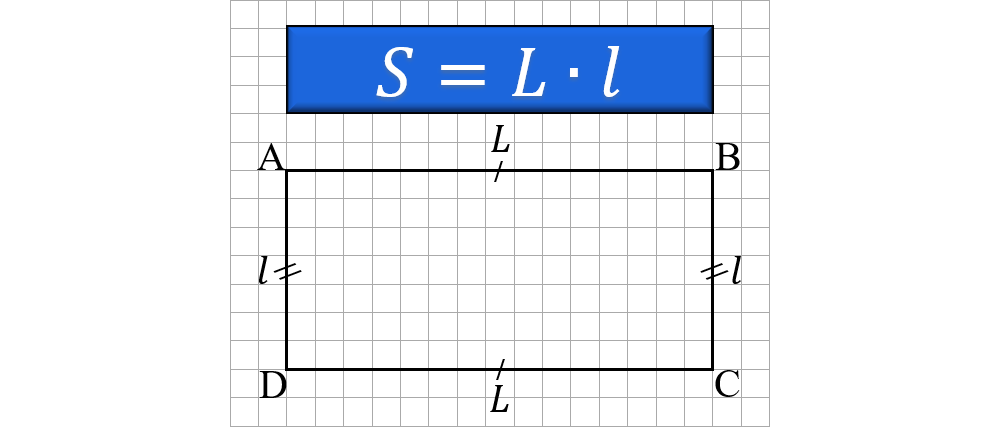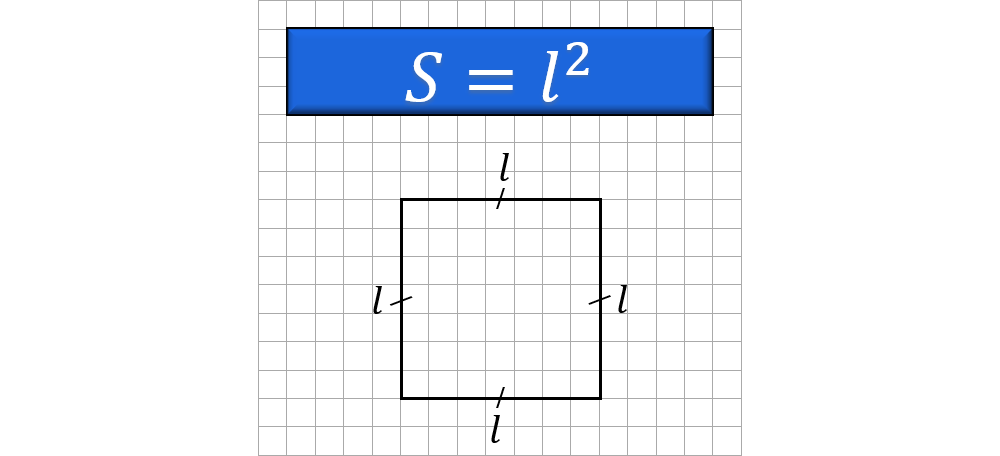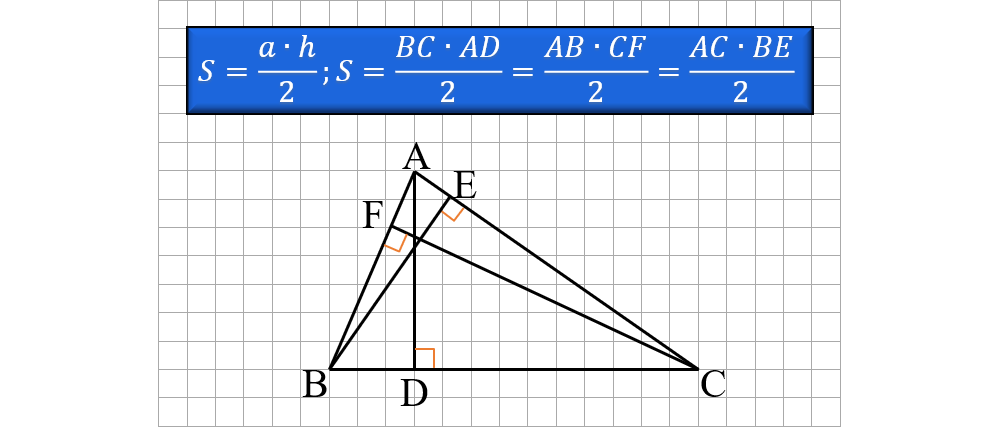II.2.3.1. Overview
The measurement of the area by indirect methods, in the case of surfaces with regular geometric shape, is done by measuring the linear dimensions and using calculation formulas:
- For a rectangle (The rectangle is a particular case of a parallelogram, which has all right angles), measure the length of the rectangle (L = AB = CD) and the width of the rectangle (l = AD = BC) and then apply the calculation formula:

- For a square (The square is a particular case of rectangle, which has all right angles and all four equal sides, denoted by l = side of the square = AB = BC = CD = AD) measure its side and then apply the calculation formula:

- For any triangle (The triangle is a polygon consisting of three sides that meet two by two, forming three internal angles) measure one side of it (a) and its height (h) and then apply the calculation formula:

- For a parallelogram (The parallelogram represents a quadrilateral that has opposite and parallel sides) measure the length of the parallelogram (b = L = AB = CD) and the height of the parallelogram (h = AF) and then apply the calculation formula:

Measurement units for the area of land areas in agriculture often used are 1 ar = 100 m2 (equivalent to the area of a square with a side of 10 m) and 1 hectare = 1 ha = 100 ar.
1. A tennis court (rectangular) has a length of 2,377 dam and a width of 8230 mm for single play. Calculate the area of the rectangle in m2.
Solution:
We note the data of the problem and transform the given parameters into SI:

We apply the formula for calculating the area of a rectangle and replace the problem data. Always add the measurement unit to the obtained result.
S = L ∙ l = 23,77 m ∙ 8,23 m = 195,62 m2
2. A certain triangle has a side of 0,008 km and the height corresponding to this side is 670 cm. Find the area of the surface of this triangle.
Solution:
We note the data of the problem and transform the given parameters into SI:

We apply the formula for calculating the area of a triangle and replace the problem data. Always add to the result obtained the measurement unit m2.

3. The floor of a room is covered with square tiles, measuring 40 cm. If you count 10 tiles on the length of the room and 8 tiles on the width, what is the area of the floor surface?
Solution:
We note the data of the problem and transform the given parameters into SI:

We apply the formula for calculating the area of a rectangle and replace the problem data. Always add the measurement unit to the obtained result.
S = L ∙ l = 4 m ∙ 3,2 m = 12,8 m2
4. Calculate the surface areas of a box that has the following dimensions:
L = 22,5 cm
l = 11,3 cm
h = 7 cm
Solution:
We transform the given parameters into SI:

- A box (parallelepiped) has six surfaces, two by two equal. So we calculate the areas of rectangular surfaces that are different, that is, three areas. We apply the formula for calculating the area of a rectangle and replace the problem data. The unit of measure is always added to the obtained result.
S1 = L ∙ l = 0,225m ∙ 0,113 m = 0,025425 m2
S2 = L ∙ h = 0,225m ∙ 0,07 m = 0,01575 m2
S3 = l ∙ h = 0,113m ∙ 0,07 m = 0,00791 m2